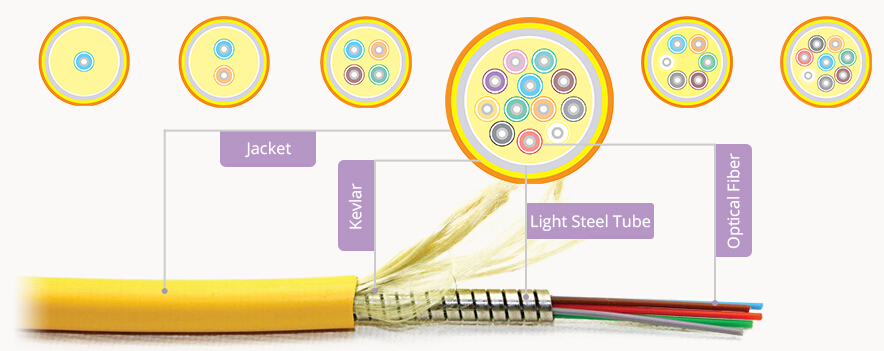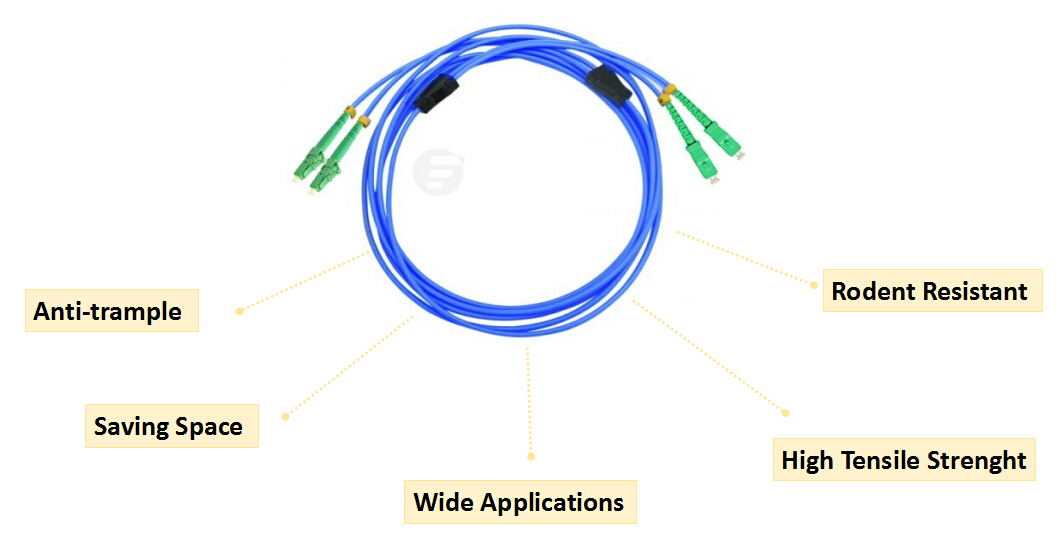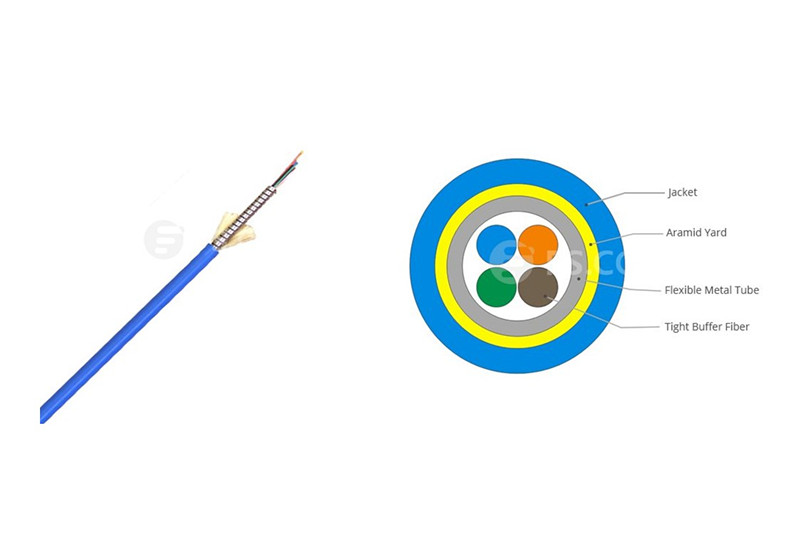With build-in metal armor inside the outer jacket, armored fiber cable provides extra protection for fiber optic cables. And this is how it distinguishes from standard optical fibers. Therefore, armored fiber cable is more robust and reliable when encountered with rodent, moisture and other issues that may cause damage. Since failures in fiber links can result in an assortment of problems and losses, it is imperative to secure your network with the durable armored fiber cable.
Structures of Armored fiber Cable
Designed with light weight and durable material, the armored fiber cable is proved to be a rodent, cost-effective and flexible alternative to protect the fragile fiber links. Armored fiber cable comes in an array of types in regard to various applications (indoor, outdoor, indoor/outdoor), therefore the structures of one usually differ from another. I’d like to illustrate the structure of indoor armored fiber cable here, to explain the basic construction of common armored cable.

Inferring from the picture below, we can see a light steel tube between the optic fibers and the outer jacket, which offers better protection to the fibers in the center. And the Kevlar is placed inside the outer jacket to cover the steel tube. This picture simply demonstrates the most basic structure of armored cable, and it changes according to different usage occasion.
How to Adopt Armored fiber Cable for Indoor Applications?
Generally, three types of armored fiber cable are often employed for indoor applications, including armored patch cables, armored trunks and armored bulk cables. The use of each in different conditions will be explained in the following.
Armored fiber patch cable is widely found in data centers, server rooms and other cabling environments, providing strong and flexible fiber link between devices. Although it is much stronger, armored fiber patch cable is actually as flexible as standard fiber patch cable, and it can be bending randomly without being broken. Armored fiber patch cable can protect the cable from damage caused by twist, pressure or rodent bite, which ensures excellent operation of the network. Installation procedure and maintenance are also easy.

Armored breakout trunks are used extensively in cable trays and riser shafts-connecting to the horizontal cross-connect or the telecommunications closet. Use of pre-terminated trunks eliminates the need for field termination, thus dramatically shortening installation time and reducing end-user office downtime. Armored breakout trunks are especially suitable for high-speed and high-density network within limited spaces. They are available with various types of connectors, fiber counts (4,6,8 or 12 fibers) and cable rating (Riser OFCR, Plenum OFCP).

We basically know that armored bulk cable is commonly applied to indoor, indoor/outdoor and outdoor applications. As for light armored fiber cable which features light weight and great flexibility, it shares much popularity for indoor use. With the prevalence of FTTx, there is a fast growing demand for installing indoor optical cables between and inside buildings. Indoor armored fiber cable is less sensitive to temperature and mechanical stress which offers an ideal choice for direct connectorization. Moreover, it can be used in harsh environments without adding extra protection. Apparently, armored fiber cable provides an efficient solution for all fiber cable problems such as twist, pressure and rodent damage.

Conclusion
Armored fiber cable provides an optimum alternative to secure your network-by protecting fiber links that exposed to mechanical or environmental damage under normal operating conditions. When selecting the right one for your specific need, take fiber count, fiber type, cable riser as well as termination types into account. For more armored fiber cable tutorial and custom information, visit www.fs.com.

No comments:
Post a Comment